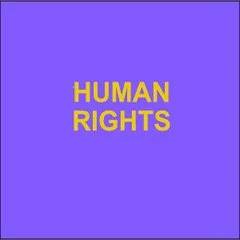By Wilder Research
In the decade since Safe Harbor became Minnesota law, the state has built an extensive network in response to the sexual exploitation of youth, and more recently human trafficking, both sex and labor. The network spans from state and local government to Tribal Nations and community-based nonprofit programs. Founded on a public health approach within the Minnesota Department of Health (MDH) in recognition of the significant health and social impacts created by exploitation and trafficking on populations, Safe Harbor also partners extensively with entities in public safety, human services, and human rights, including the Minnesota Department of Human Services (DHS), the Minnesota Department of Public Safety (DPS) and the Minnesota Coalition Against Sexual Assault (MNCASA) to offer a comprehensive multidisciplinary response. State law requires the Safe Harbor Director, based in MDH, to submit a biennial evaluation of the program to the Commissioner of Health under Minnesota Statute Section 145.4718. The purpose of the evaluation is to ensure Safe Harbor is reaching its intended participants, increasing identification of sexually exploited youth, coordinating across disciplines including law enforcement and child welfare, providing access to services, including housing, ensuring the quality of services, and utilizing penalty funds to support services. The Safe Harbor law passed in 2011 and after a three-year planning period called No Wrong Door, the Safe Harbor system was fully enacted in 2014. In the years since, Safe Harbor has submitted three evaluation reports to the legislature, beginning in 2015. Each evaluation was conducted by Wilder Research at the Amherst H. Wilder Foundation (Wilder) under a competitive contract with MDH. The evaluation process is an opportunity to hear and learn from trafficked and exploited youth as well as participants from a variety of disciplines who respond to the needs of these youth on a daily basis. For the current Phase 4 report, MDH contracted with Wilder again while MDH’s Safe Harbor Program produced accompanying evaluation materials. As a result, this Phase 4 Safe Harbor evaluation draws from complementary background reports that are combined to represent a variety of perspectives from both outside and within the Safe Harbor network. These resources not only evaluate Safe Harbor’s activities, but also address these activities in the context of significant current events including the global COVID-19 pandemic and the civil rights movement in Minnesota, as well as around the nation and world, in the wake of George Floyd’s murder. The supplemental evaluation materials, containing expanded findings, data, and appendix are contained in this document. All findings focus on the Safe Harbor network and activities between April 1, 2019, and June 30, 2021. The Wilder data collection and analysis took place between January 1, 2021, and June 30, 2021. The MDH data collection and analysis took place between September 1, 2020, and August 1, 2021. Between January 2021 and June 2021, Wilder interviewed grantees, multidisciplinary partners, and youth clients, and also surveyed youth clients to evaluate Safe Harbor. Wilder submitted its report including several findings and recommendations to MDH. Wilder found evidence for outcomes related to multidisciplinary partnership and access to services, including culturally specific services; the factors contributing to Safe Harbor’s impact; gaps and challenges; opportunities for improvement; and the pandemic’s impact on service provision. MDH analyzed the provision of the statewide Safe Harbor Regional Navigator component and the reach of the Safe Harbor Network to identify and serve youth, as well as availability, accessibility, and equity of Safe Harbor supportive services and shelter and housing, in addition to training for providers. MDH then submitted a Phase 4 evaluation report to the legislature including combined findings, recommendations, and conclusions. Summary recommendations are listed here, but included with further detail in the legislative report and within the supplemental evaluation materials included in this document: Recommended actions: ▪ Increase stakeholder ability to identify youth. ▪ Expand protections and services regardless of age and remain flexible in identifying service needs. ▪ Increase and improve access to services, especially for youth from marginalized cultures and greater Minnesota. ▪ Support more diverse and consistent staffing. ▪ Increase amount and cultural appropriateness of technical assistance, education, and training provided. ▪ Increase prevention efforts (by decreasing demand and identifying risk factors). ▪ Support improvement of more continuous, comprehensive, and robust outcome and process evaluation as well as inferential research. ▪ De-silo the response to sex and labor trafficking. ▪ Increase youth voice and opportunities within Safe Harbor. ▪ Heal organizational trauma to better help organizations, staff, and clients. ▪ Improve equity by conducting a cultural needs assessment with several cultural groups as well as strategically directing allocations of funds and resources to culturally specific groups. ▪ Strengthen relationships within the public health approach. ▪ Further promote government agency collaboration.
St. Paul, MN : Minnesota Department of Health, Safe Harbor, Violence Prevention Unit, Health Promotion and Chronic Disease Division 2021. 130p.







